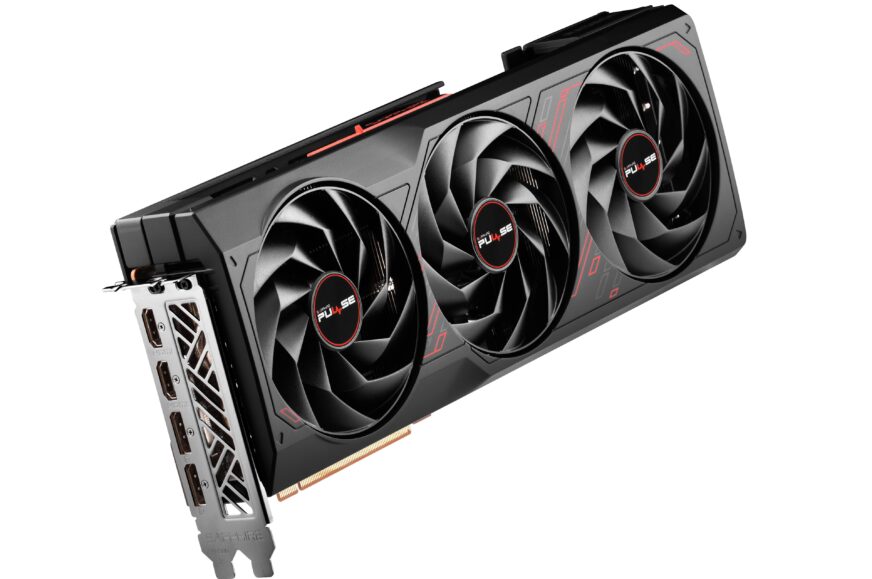RX 7900 GRE, a more power-efficient upgrade over the 7800 XT for 549 USD
The Radeon graphics lineup is getting a new SKU slotted between Radeon RX 7800 XT and the Radeon RX 7900 XT. AMD launched the Radeon RX 7900 GRE into that gap last summer even ebfore the launch of the RX 7800 XT, but initially it was a China specific SKU. The cards started to be available in the western markets later though and AMD has now made this official – the Radeon RX 7900 GRE is coming out globally and with a larger selection of models.
The Radeon RX 7900 GRE is based on a hybrid GPU using the high-end Navi 31 GCD chiplet with almost as many compute units as in the Radeon RX 7900 XT: 80 RDNA 3 CUs or 5120 shaders / 80 Ray Accelerators / 320 TMUs and 160 ROPs. However, the chip is housed in a smaller package with fewer contacts and only a 256-bit memory bus. The primary use of this version of the GPU is in laptops, the Radeon RX 7900M is based on it.
Due to the narrower bus, the Radeon RX 7900 GRE only has four MCD chiplets active, so it has 16GB of memory on a 256-bit bus and 64MB of Infinity Cache. This package should be compatible with Navi 32, so this hybrid version of Navi 31 can apparently be fitted on the PCB meant for the Radeon RX 7700 XT and 7800 XT. The TDP of the Radeon RX 7900 GRE is quite similar to that of the RX 7800 XT with Navi 32, too.
By default, the Radeon RX 7900 GRE runs its 5120 shaders at relatively low clock speeds. The reference boost clock speed is only 2245 MHz and the so-called gaming clock speed is 1880 MHz. The card’s 16 GB of GDDR6 memory runs at 18.0 GHz (effective speed), giving a bandwidth of 576 GB/s. Thanks to the low clock speeds, the card also has a relatively low TDP, 260 W.
It’s interesting to compare this model to the Radeon RX 7800 XT, which instead uses a natively smaller Navi 32 GPU, that only provides 3840 shaders (60 CUs), compared to which the RX 7900 GRE provides 33% more compute units. The RX 7800 XT, however, has higher clock speeds (gaming clock speed 2124 MHz, boost 2430 MHz), which is at least 8–13 % better than in 7900 GRE. On area where the 7800 XT has the advantage, is in memory clock speeds, which are at 19.5 GHz effectively in its reference specs, giving a bandwidth of 624 GB/s.
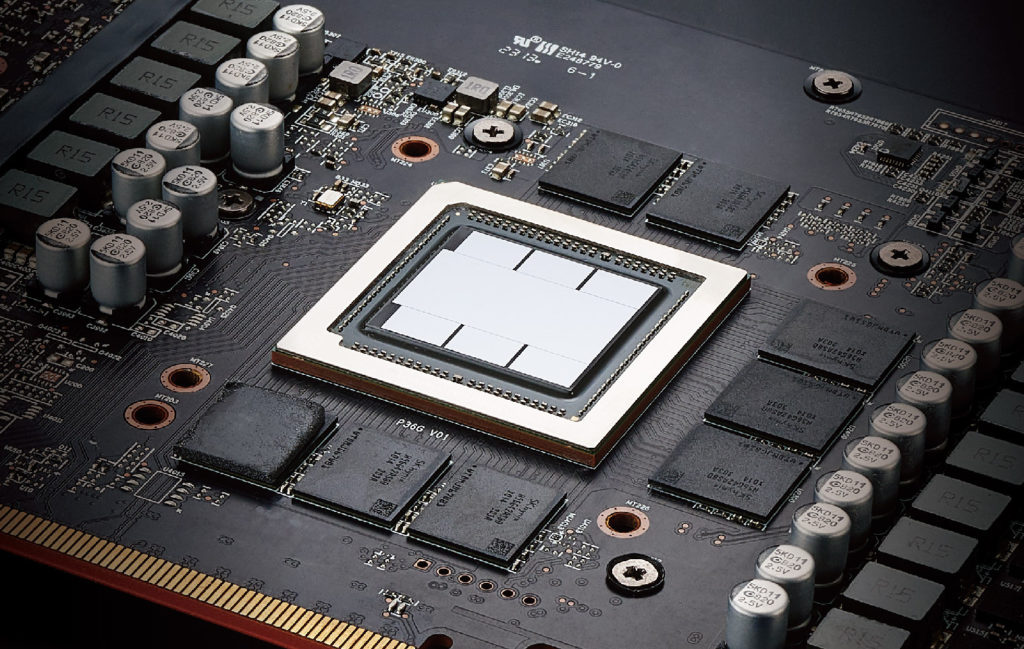
An alternative with better performance at the same or lower power consumption
The TDP of both graphics cards is almost the same (RX 7900 GRE 260 W vs RX 7800 XT 263 W), so the Radeon RX 7900 GRE with its lower clock speeds operates in a more power efficient band. According to reviews at the time of release, this makes it deliver a few percent more performance than the Radeon RX 7800 XT at the same power consumption, but the difference isn’t exactly huge. If you are concerned with power consumption, this probably makes the Radeon RX 7900 GRE a choice interesting to you within the RX 7000 generation card lineup. It could perhaps end up being the most efficient graphics card in the RDNA 3 generation.
The low clock speeds should also mean there’s plenty of potential for overclocking, but OC ability was surprisingly not bad on the RX 7800 XT either, which will probably also be helped by the higher memory clock speeds, when you push overclocking of the GPU core.
The Radeon RX 7900 GRE in its reference form has a dual eight-pin power supply and a cooler with three axial fans, and that’s probably what non-reference cards will look like in most cases as well. Four outputs are fitted as standard – three DisplayPort 2.1s (with UHBR 13.5 support) and one HDMI 2.1.
Lower price
The suggested price for the Radeon RX 7900 GRE now at its international official launch is 549 USD, which is less than at the time of last year’s Chinese launch (649 USD).
The cards are available in stores now (the in-store availability has begun on the 27th).
Until now, there was relatively limited choice of non-reference variants of this graphics card on the market, for example only a model with the reference cooler could be bought in Czech Republic from a single store in the previous semi-official or unofficial mode of distribution. But now that AMD has released the model officially for the global market, there’s now a number of new non-reference models that should be commonly available. We have information on the Radeon RX 7900 GRE cards that Sapphirehas released for this “relaunch”.
Sapphire Pulse Radeon RX 7900 GRE 16GB
The basic variant of Sapphire’s non-reference models is the Pulse version. This is already a card with three fans with an edge ring that improves structural rigidness and static pressure and a special blade shape that changes angle in the middle, which should improve the accoustic profile (these fans have dual ball bearings and are found in all models). The cooler has a thickness of 2.5 slots and the card is 32.0 cm long.
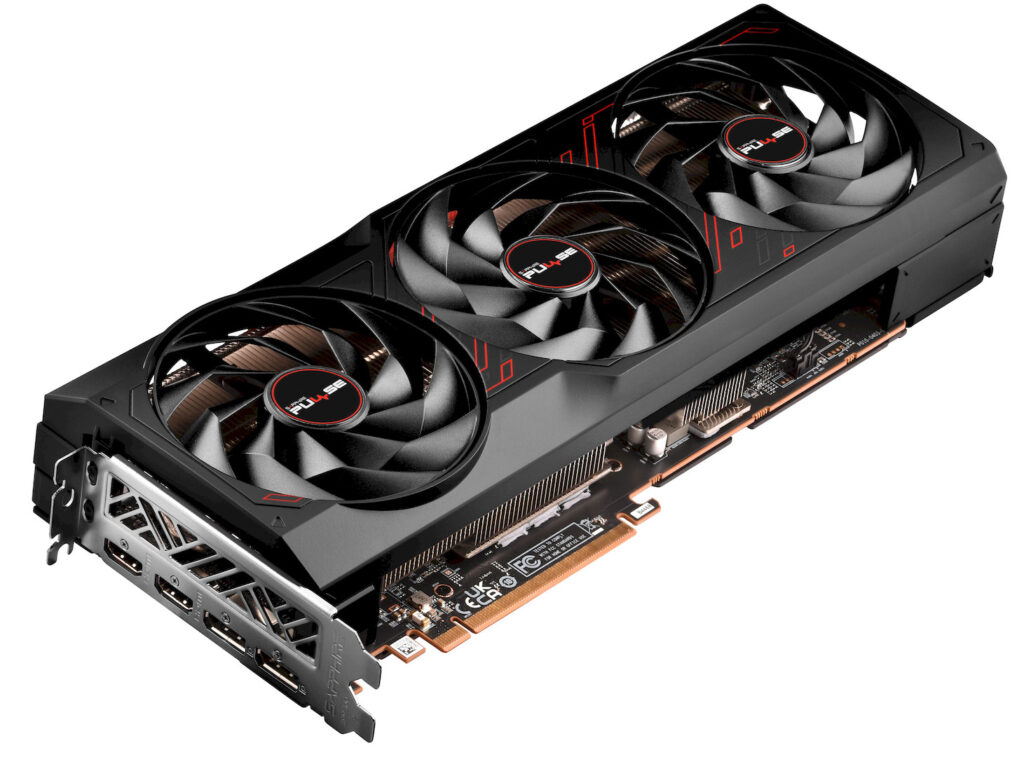
Even the base Pulse model has a slight overclock applied on top of the reference specifications. It is 1925 MHz for gameclock (+2.4% OC), the boost clock speed is 2290 MHz (+2.0%). TDP is increased to 268 W (+3.1%).
The specifications don’t explicitly mention it, but all three models, including the base Pulse card, provide the fan stop funcion for idle and low load usage (also know as 0dB mode).
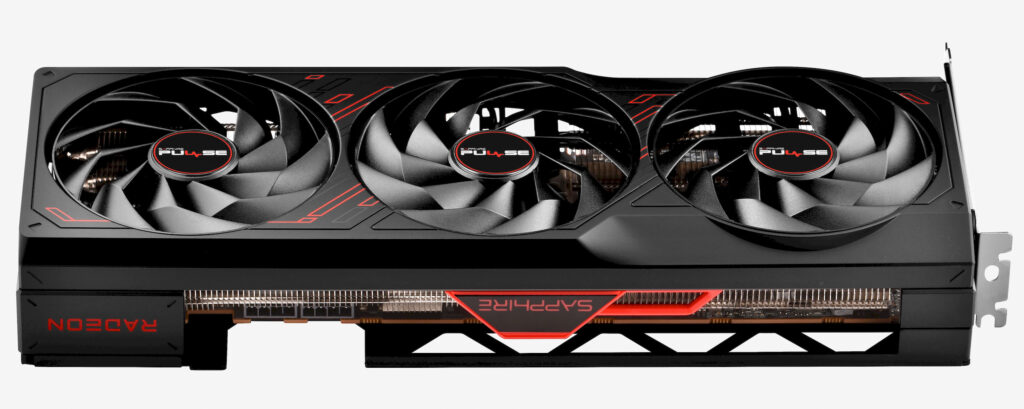
Sapphire Nitro+ Radeon RX 7900 GRE 16GB
The more expensive Nitro+ model is already a three-slot card with a cooler cover and a steel backplate, but the length should be the same 32.0 cm, again with the same fans with special-shaped blades and stabilizing ring. On this card though, they are easily detachable and swappable (this is called Fan Quick Connect by Sapphire). In case of a fan problem you don’t even have to take out the card from the motherboard, just unplug the fan and you can have a replacement shipped to you by the Sapphire. You should be able to diagnose fan failure and issues (and report them to the manufacturer) directly from the Sapphire’s TriXX app.
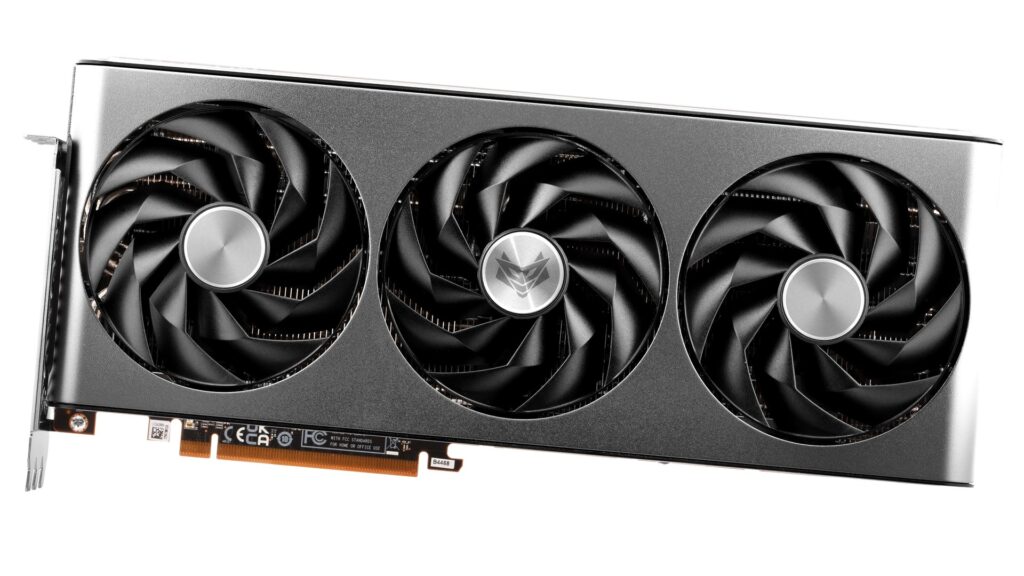
This model is more significantly overclocked out of factory. It has a Game Clock of 2052 MHz (+9.1%) and a boost of 2391 MHz (+6.5%). The cooler also has ARGB backlighting, which can be directly connected to the ARGB control from the motherboard or other external source using a header, so it will be synchronized with other components.
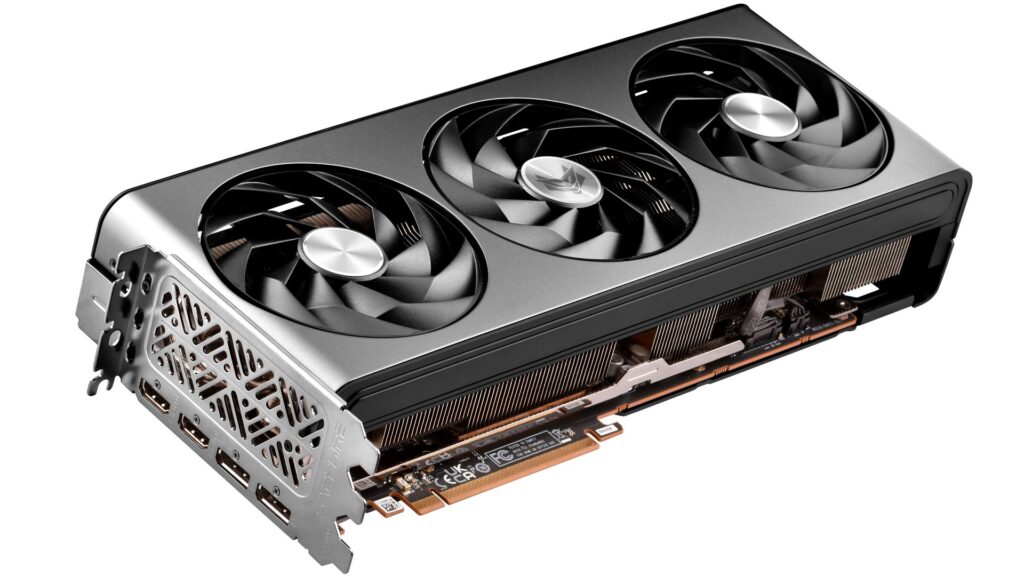
This card also has two BIOSes with the ability to toggle between silent mode (which has the GPU power consumption, i.e. TGP, set to 212 W) and OC mode (TGP 244 W, so here the TDP of the whole card will probably be somewhere around 290–300 W). Toggling can be done with a physical switch on the card, but also in software from the TriXX app.
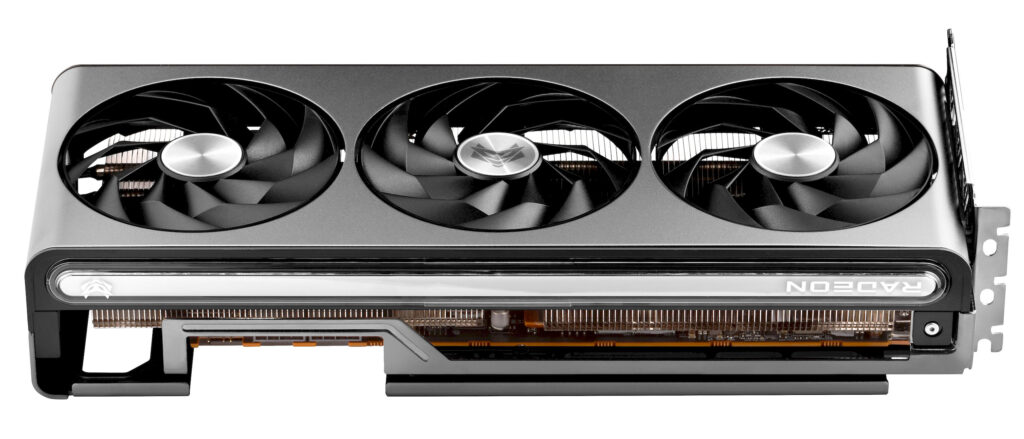
Sapphire Pure Radeon RX 7900 GRE 16GB
The third model in the lineup is the Pure version, which should be based on the same 2.5-slot thick cooler design as the Pulse version (so the length is also 32.0 cm) with three fans, but in white finish with red illumination. This design should be very similar to the Pure cards of the RX 7700 XT and RX 7800 XT series.
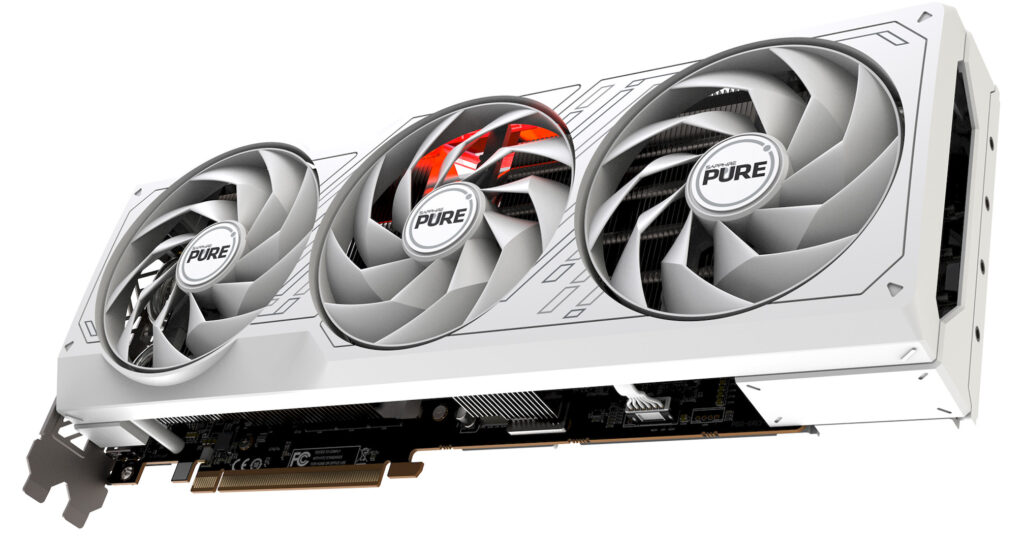
The clock speeds on the Pure card are also increased. Game Clock is 1975 MHz (+5.1%), boost 2333 MHz (+3.9%). The card has two BIOSes with the option to toggle to silent mode, just like the Nitro+ card.
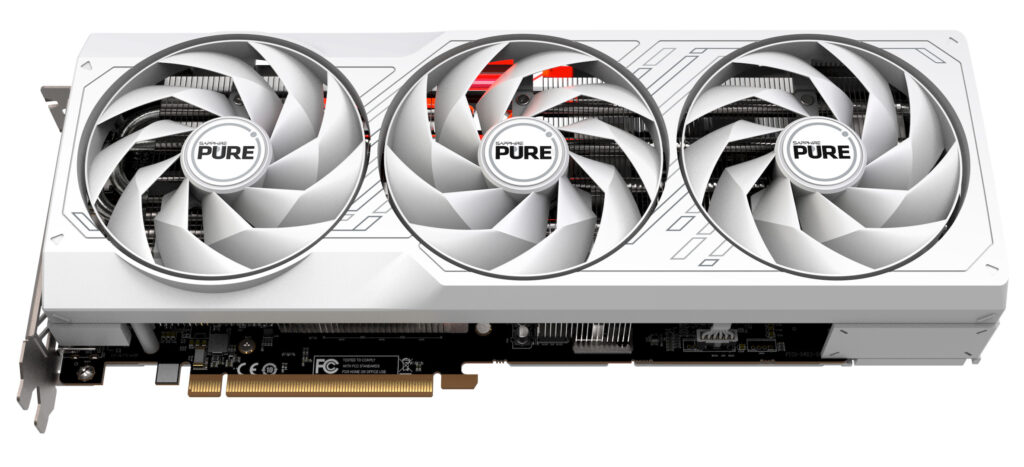
All the three cards should come with an L-shaped support bracket in the package, which you can fasten through the PCIe bracket screws area, to give the card extra support from the bottom to prevent sagging and deformation.
Sources: AMD, Sapphire
English translation and edit by Jozef Dudáš
⠀





